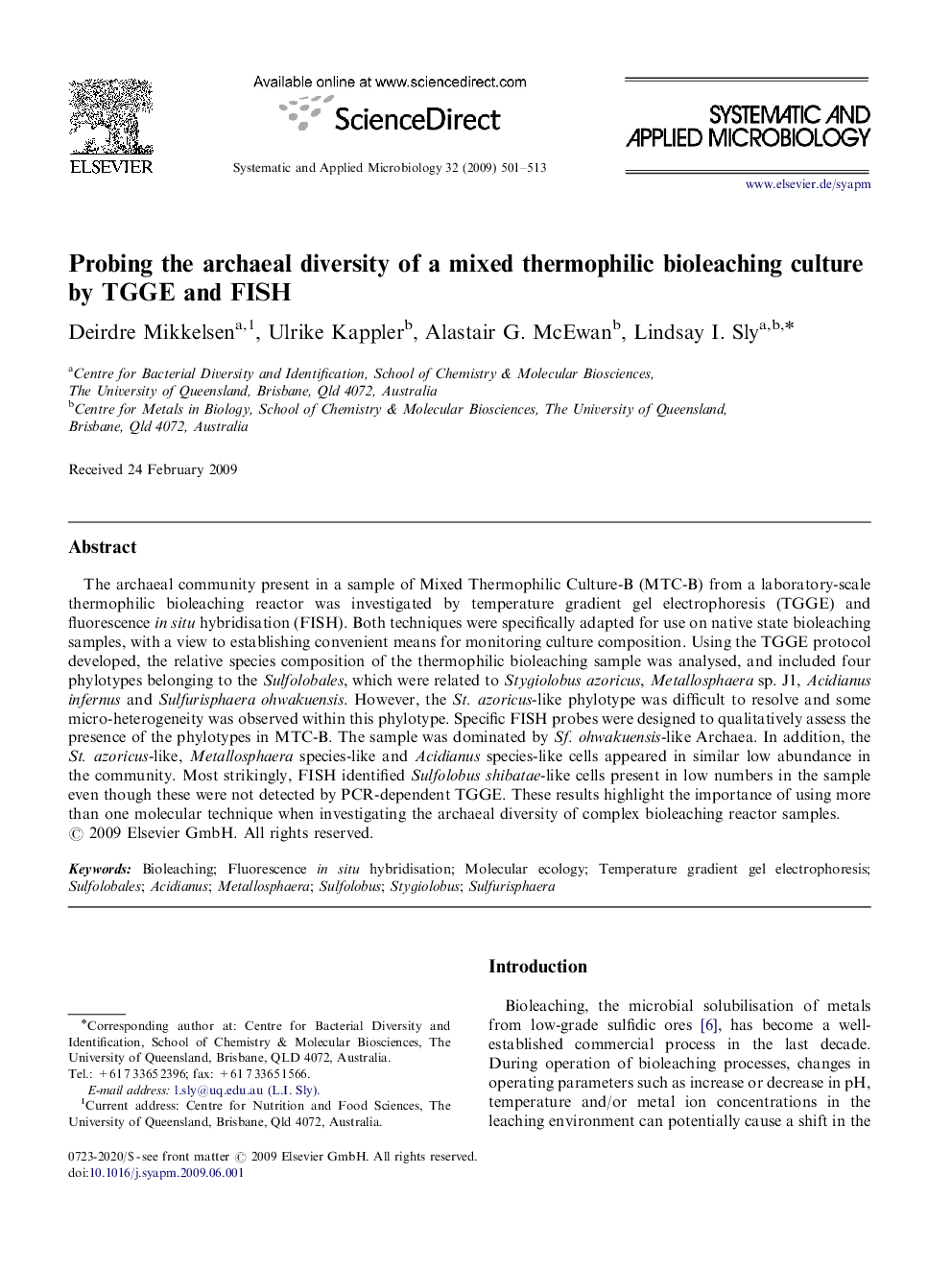| Article ID | Journal | Published Year | Pages | File Type |
|---|---|---|---|---|
| 2063330 | Systematic and Applied Microbiology | 2009 | 13 Pages |
The archaeal community present in a sample of Mixed Thermophilic Culture-B (MTC-B) from a laboratory-scale thermophilic bioleaching reactor was investigated by temperature gradient gel electrophoresis (TGGE) and fluorescence in situ hybridisation (FISH). Both techniques were specifically adapted for use on native state bioleaching samples, with a view to establishing convenient means for monitoring culture composition. Using the TGGE protocol developed, the relative species composition of the thermophilic bioleaching sample was analysed, and included four phylotypes belonging to the Sulfolobales, which were related to Stygiolobus azoricus, Metallosphaera sp. J1, Acidianus infernus and Sulfurisphaera ohwakuensis. However, the St. azoricus-like phylotype was difficult to resolve and some micro-heterogeneity was observed within this phylotype. Specific FISH probes were designed to qualitatively assess the presence of the phylotypes in MTC-B. The sample was dominated by Sf. ohwakuensis-like Archaea. In addition, the St. azoricus-like, Metallosphaera species-like and Acidianus species-like cells appeared in similar low abundance in the community. Most strikingly, FISH identified Sulfolobus shibatae-like cells present in low numbers in the sample even though these were not detected by PCR-dependent TGGE. These results highlight the importance of using more than one molecular technique when investigating the archaeal diversity of complex bioleaching reactor samples.
